Anne Schwalbe is one of those photographers who have created their own niche. Where other artists’ Instagram accounts showcase prices they won or books they’ve published, Anne fills hers with photographs of gardens, information about all kinds of plants that apparently are perfectly edible, hand-sewn clothes, and living in and renovating a house that looks as if it were part of an open-air museum of traditional village life. Her photography summarizes this kind of sensibility very well, and I had wanted to talk to her about her work for a while.
In late December 2021, we connected via Zoom. The following conversation has been edited for length and clarity, and it has been translated from its original German.
Jörg Colberg
How did you get started with photography?
Anne Schwalbe
I had been interested in photography for a very long time. In sixth grade already I had a black and white course in school. During the application period for my high school diploma, I applied for a photography apprenticeship at a passport photo studio and at Lette Verein. But neither of those worked out. Afterwards, I thought I couldn’t take pictures, so I didn’t take pictures for a long time.
I then started a voluntary ecological year but dropped out because I was training to be a publishing-house clerk. I thought that would be a great and safe job, but I dropped out again because it was totally boring. Afterwards, I studied German and Cultural Studies at the Humboldt University in Berlin because I still didn’t know what else to do. I didn’t have the confidence to do the things I wanted to do! I finished my studies because I wanted to get my degree. But after two years, I realized that it wasn’t my thing either, because I’m not a theory person. I prefer practical work. The whole time, I had a part-time job in a flower shop. I was very happy about that because I was able to work with my hands.
I somehow got through my studies, with half a year in Belgium. During my studies, I learned black and white enlargement in a media workshop in Berlin. Starting in 1999, I had been photographing more, and I did a lot of photography in Belgium, always using black and white and 35mm film. I saw an article about the school Fotografie am Schiffbauerdamm, the predecessor of Ostkreuzschule. It had been co-founded by Arno Fischer. I applied with my black-and-white pictures, had an interview with Werner Mahler and was accepted. I can still remember the interview very clearly. Werner Mahler looked through my portfolio twice, which gave me hope. Werner Mahler then did not stay at the school and half of the class left with him. We had half a year of private lessons at Ute and Werner Mahler’s home, which was great. Soon after, the Ostkreuz School of Photography was founded, and we were the first class to graduate from it.
JC
Black-and-white 35mm film is rather different than medium format, colour. How did things change?
AS
Early on, I continued to work with 35mm black-and-white and also colour film. At some stage, Werner Mahler said, “It’s all much too perfect. Every picture is much too perfect. There’s a break missing. There are no breaks. Why don’t you try a different format?” A few people from my class looked into which good, inexpensive medium-format cameras were available. Someone found the Yashica Mat 125G, and we bought it. Since then, which was about 2004, I’ve been shooting medium-format, colour film always with that camera.

JC
And everything using colour film?
AS
Yes. The analog process in the lab is very important to me. Colour is not easy. In the end, it is quite time-consuming to get the right set of filters that you want. I know there are people who have a printer and process the image on the computer. But I’m just not that good with the computer. I could learn to do it, but it would be a completely new process. I would have to spend an insane amount of time and money to get into it. I’m simply used to the analog process.
In the lab, I deal very intensively with the image. I can decide much better whether I like it or not, how I want the colours, the brightness… I imagine this to be much more complicated on a computer with a printer next to it.
I am a member of the PS15 laboratory community in Berlin-Neukölln. We have a Colenta enlarger with 60cm inlet width and share rent, chemistry costs, etc.
JC
Personally, I find that lab prints have more atmosphere. I can’t remember any artist whose inkjet prints impressed me. They’re always so impersonal. They all look the same. On the other hand, I’m not interested in the cult around the lab.
AS
I like the end result of the process. I’m happy about that. The process itself is also exhausting. You stand in the dark lab for hours, make test strips… Then the machine doesn’t work, there’s a problem with the chemistry, something is wrong with the lens… It’s not like I stand in the lab and think, “Hooray, I’m back in the lab.” I’m mostly happy about the results. I think the process itself is very important. I also think that analog photographs have much more atmosphere. The whole process behind it is probably noticeable. But I also hang newspaper clippings on my walls.
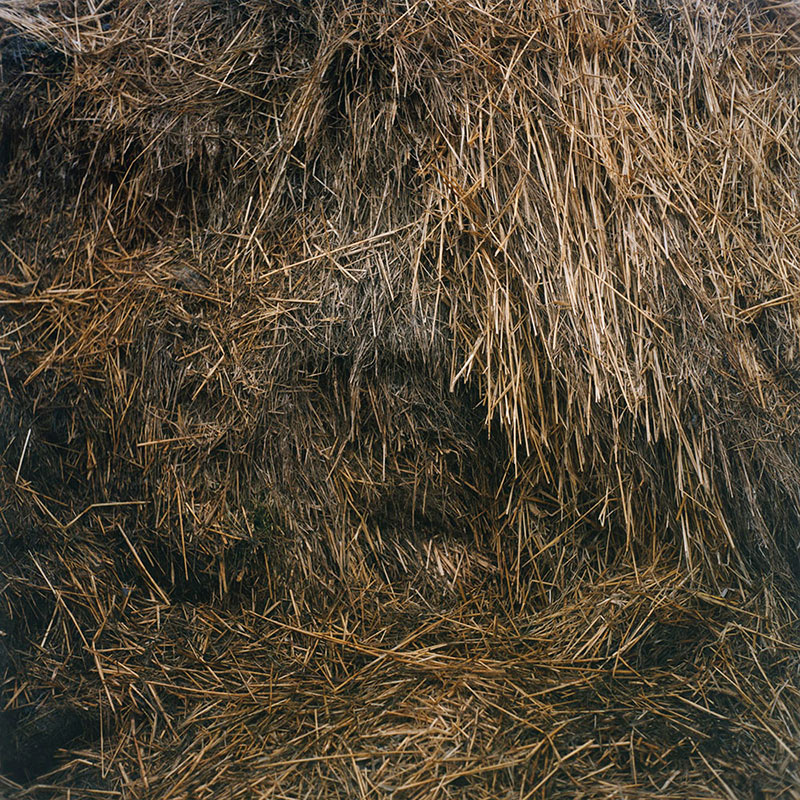
JC
In your online store there are also cheaper prints made on cardboard, right? Maybe for people who don’t necessarily have the money to afford a large print?
AS
Yes, I thought that was a good thing to do. I have the impression that my photographs don’t appeal to people who put conceptual art into their drawers. Instead, people buy them who really want to hang them on a wall. So I thought it was good to have cheaper things to reach more people.
I had the same experience with my first book Blindschleiche und Riesenblatt, which reached a lot of people. I’m happy when the pictures hang somewhere and don’t lie in a drawer. All in all, my books are very important. I have reached many people through them, and a lot of things have happened because of my books. Currently I have ideas for five more books. I hope I can make all of them happen.
JC
You studied literature. Do you feel that has had an influence on how you see photography?
AS
I wouldn’t necessarily study it again, but somehow, it certainly helps me. After all, I spent five years writing and researching and writing and thinking about texts. It certainly has an influence, without me being able to say anything concrete. Language is still very important to me. I always think very long and hard before I write anything. I really strongly dislike platitudes and exaggerations. I’m very sensitive to that.
JC
How would you describe your photography?
AS
I find it hard to describe. I know that you say that every photographer should be able to describe their work. I’ve tried many times to find something for submissions to competitions, but I still find it complicated. At some point I came up with a few sentences that work for me: “I reduce reality to what is essential for me. This results in very calm, powerful images. I always work very intuitively, without using fully developed concepts.” I don’t think that’s all that wrong. I also photograph mainly nature.
There is a text about my work that sums it up very well: “Schwalbe photographs her surroundings intuitively, with no preconceived ideas. Compiled in a publication or hanging together in an exhibition, the photos become the lines of a poem. Anne Schwalbe visualizes stillness, providing another voice and a welcome change from the contemporary visual bombardment. With no reference to location or other narrative aspects, she reveals what has caught her notice, or the things that fascinate her. (…) each image has its own strength and tells its own story in the mind of the viewer.” (Foam Museum for Photography, Amsterdam)
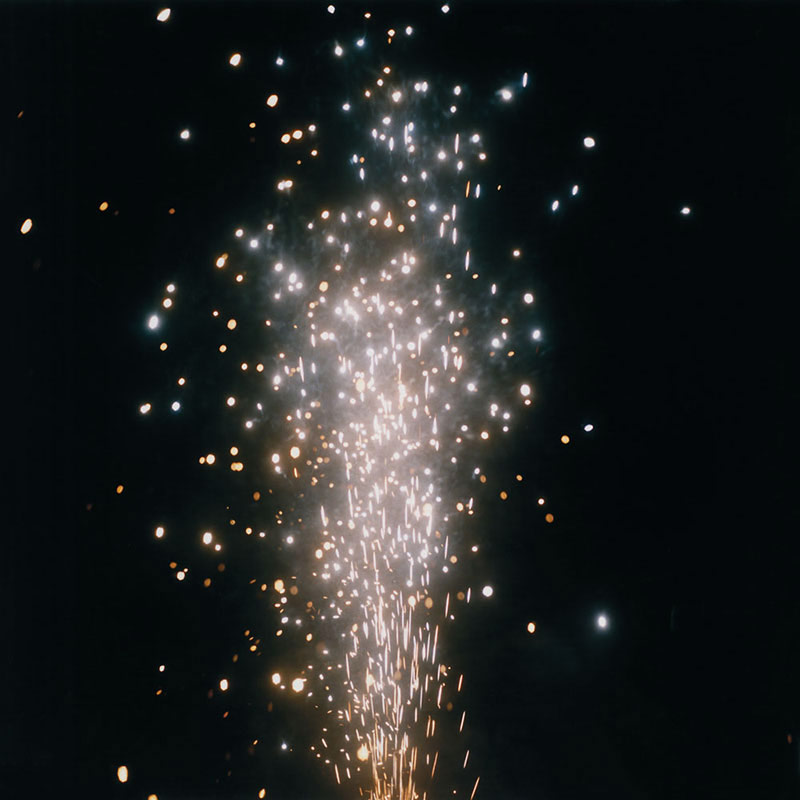
JC
I thought of two things about your work. I don’t know to what extent you would say they apply. On the one hand, I see a meditative element in your work. And the images are relatively simple. I mean that in a positive manner, not at all as a criticism. They are very quiet. What do you make of that?
AS
Yes, definitely. I like simple things a lot. Simple is totally positive for me.
JC
I also find simple very beautiful. Simple is always the best. That’s one of the most difficult pieces of advice when I work with photographers: in the beginning, keep it simple. You can make it more difficult later. But simple itself is really not so easy. For you it seems relatively easy, though.
AS
When I’m taking pictures, I’m completely immersed in the process and in the picture, more concentrated than anywhere else. I am very focused on the picture. Most of the time I see the framing very quickly. I feel that this is almost like a form of communication with the object or the plant. Sometimes I take a number of frames, sometimes only a single one. For the Japan series, there often is only a single frame.
Recently, I photographed sheep on the island of Rügen. That made a lasting impression on me. I had a few hours alone, and I was fully concentrated in the company of about 400 sheep. I find the photographs incredibly calming. It makes me look forward to the process in the lab, enlarging them.
But I also think that achieving good simple things is very complicated. For example, when I wanted to make my first book, I approached designer Birgit Vogel who had done Ein Magazin Über Orte. I liked that so much. It was incredibly plain and simple, a very simple design. But that is precisely what is so complicated. I’m not a graphic designer myself. That’s why I asked her because I wanted my book to be just as simple and straightforward.
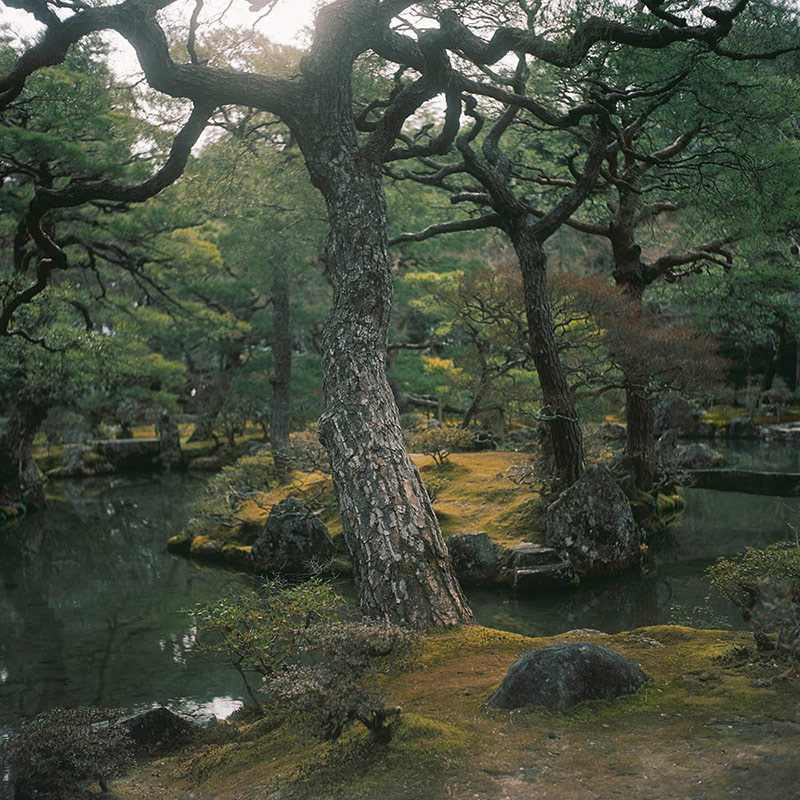
JC
Is it possible that this is where your affinity for Japan comes from? You photographed there as well.
AC
It’s possible. The Japanese have an incredible talent for simplicity… You might find the branch of a plant somewhere in some space — and it’s perfect. Anything else would be too much. I often walked through stores or spaces and asked myself, “OK, what’s different here? Why does it look the way it does? And how can they create such an atmosphere with so few things in a way that you can’t find anywhere else in the world?” Of course, there now are stores in Berlin where you can see that. But in Japan it’s much more common. There seems to be a natural talent for it there.
I was also very impressed by an open-air museum near Tokyo that has 20 to 25 old Japanese wooden houses. I’ve been to Japan twice. Both times, I went there. They have wooden houses from different areas that were rebuilt there. They’re just empty rooms. And these spaces have such great vibrancy and impact. The museum is called Japan Open Air Folk House Museum. I highly recommend visiting.
I also think that Japanese people are much more sensitive than, for example, Germans. There, no one bumps into anyone else, even when it’s really busy. They seem to have more antennas and more sensitivity. This is one of the many other aspects that I find very interesting in Japan.
JC
Speaking of wooden houses, you bought your own old house in the countryside, didn’t you?
AS
Yes, at the Elbe river, right in the middle between Berlin and Hamburg. I first came there in 2003 for an Ostkreuzschule trip. We went there as a class and immediately liked the place a lot. We were able to stay in a very nice house owned by a restorer and decided that as a class we would do a project there. We photographed for half a year, collected sponsorship money, and made an exhibition and a book. I learned an incredible amount about how to make a book, how to make an exhibition, how to raise money. Also about photographing… [laughs] That’s how I got to know this beautiful place.
JC
What I see on Instagram of course is not Japanese. But in some ways, it’s also reduced, a bit simpler. Maybe a bit like pre-modern life.
AS
The house needs to be renovated. I want and need to do a lot there this year. The foundation has to be redone. The floors all have to be insulated. Now, I’m there very often and enjoy it very much. I also take a lot of pictures there. More than half of my pictures were taken there. I often think about it.
At the moment, daily life begins with me getting up and heating the kitchen stove. Sometimes, when there’s no fire wood the very first thing I have to do is to chop wood. Then I heat water on the wood stove or sometimes with a kettle because there is no hot water in the house, yet. Sometimes, I go for a run across the meadows. When I come back, the water is hot and the kitchen is warm. Then I go and take a shower in the yard: first a bowl of hot water, then a cold shower. Cold showers are much easier outdoors than indoors! And I feel great afterwards!
Of course, sometimes I also want to have warm water available. Of course, I like taking a warm shower. I’m trying to figure it out. But I also somehow find the slow steps very pleasant. Everything falls away. Here in Berlin I also heat water, but I do it on the gas stove. Then I take a shower, which is immediately warm. There, it all falls away. Everything takes a very long time, much longer than in this “normal” life. At the same time, there’s something calming about it.
I’m a big fan of manual labor: washing dishes, chopping wood, sewing, cracking nuts… I find all of that very enjoyable. I think that’s why I like it there so much. It’s just calming. But sometimes it’s annoying. I don’t want to romanticize it. When the kitchen is cold and I don’t have hot water right away, or when I have to chop wood…
I think about what it does to you when you have these quiet, slow, elaborate processes.
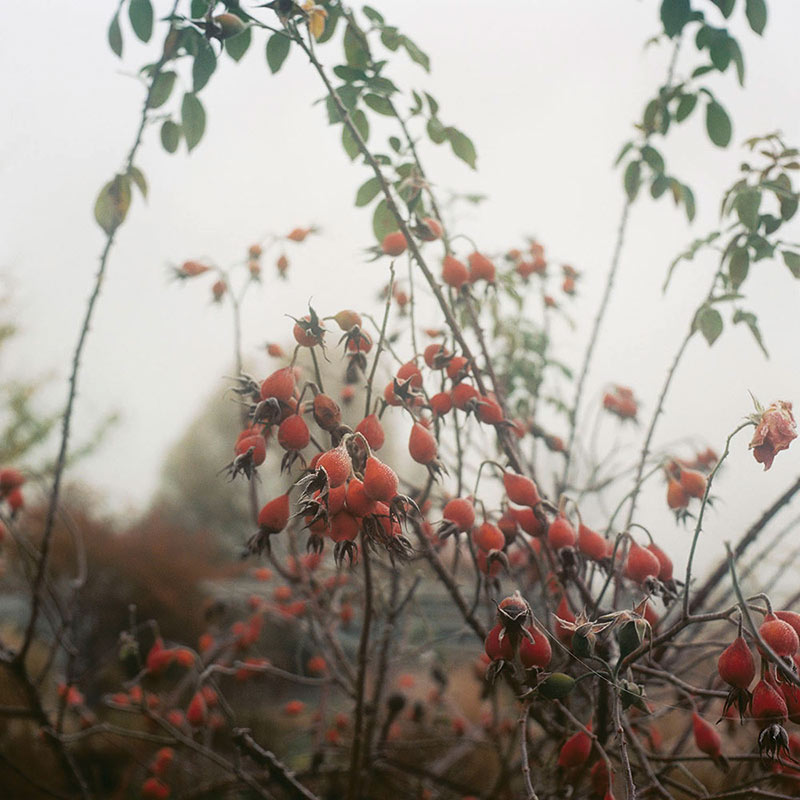
JC
You also have a garden and a column in ZEIT magazine. For that, you talk to people who do garden work. I don’t want to put too much meaning on this, but somehow that has something to do with the meaning of life, doesn’t it?
AS
Yes. In this week’s edition of ZEIT magazine, there is an article about the meaning of life. What I like about my garden column is that I can photograph what I’m interested in — gardens and plants. I also enjoy the conversations with gardeners a lot. I always learn something new and get to know great people.
JC
Do you write the texts yourself?
AS
The texts are a collaboration with an author from ZEIT magazine. I call or talk to the gardeners on site, ask them questions, and then I write a draft, which the author edits. The column came about through my garden and the many other gardens along the Elbe river. Of course I also take photos in other areas. I suggested to ZEIT magazine to do the column. For a while, I had been wondering why the topic of gardens, which interests so many people, had not yet appeared in ZEIT magazine.
JC
As an artist, you’ve created an amazing niche for yourself. I can’t think of anyone else who works the way you do and whose sensibility for photography is the same in Germany. If I gave your name and said you live in Berlin, people would certainly not expect your photos to look the way they do. When you look back, how do you see your path? And what do you envision for your future?
AS
The last ten years were incredibly interesting. Before, I had been searching for my thing for ten years, and I was always dissatisfied. I remember how I felt between my 20s and 30s. I spent ages looking for something I enjoyed doing. In my early 30s, I was at a point where others are when they’re 20. So things were interesting and varied. But it wasn’t a piece of cake, either.
It was a long road that was very interesting and varied — but not easy.
JC
Should we talk about that as well?
AS
[laughs] The things that weren’t easy?
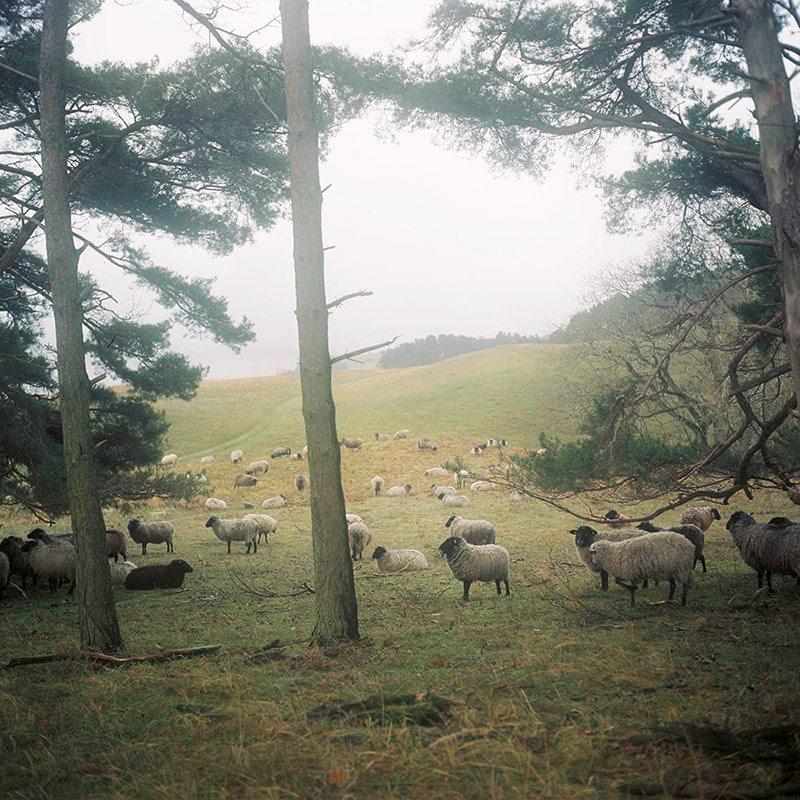
JC
We don’t have to, but no one ever talks about it. It’s an important aspect that we can talk about if you like. Photography is not easy: making ends meet, selling pictures…
AS
Yes. A few years ago, I wanted to quit photography and get a steady job. I was annoyed. I had a lot of work and little money. Too often people assume that artists work for free. It’s so much work to produce exhibitions! What carpenter would work for free to get his or her table into a good space? If you like an artist, you can always support them by buying their pictures! It’s that simple. Fortunately, my applications for a full-time job were not successful and I continued with photography.
People still ask me regularly if I can make a living from photography. I think this happens to all other photographers, too. Well, maybe not all of them. Famous people are certainly not being asked. But even for them it’s not easy. I was once told by someone who is already very well known that it is not always easy for him, either. Sometimes a year is good, sometimes a year is not good. I find the question interesting. I often ask myself what people live on and how they pay their rent, whether they have inherited money, whether they have a side job, or just do a lot of jobs.
Here in Germany we have the Künstlersozialkasse, a low-cost health insurance fund for artists. It’s quite important. Cheap housing is important. I am happy that I am in the Künstlersozialkasse and that I have a nice and cheap apartment. I think the massive and unjustified rent increases that ordinary wage earners can’t afford are criminal. They’re really criminal! They destroy so much, not only in the artistic field. People always pretend as if “the markets” are independent beings that cannot be influenced! I think “politics” has to intervene much more!
I wouldn’t even know how to do a part-time job to make money, given everything I’m doing already. Time wise, I wouldn’t be able to manage it. My impression is that there are more and better scholarships in other countries. I don’t know if I’ve heard this correctly, but in Holland there’s a scholarship for three years after graduation so that graduates can find their own way. This makes a lot of sense. In Switzerland there are many scholarships and not many artists. Someone once said that she was told, “apply, we haven’t spent the money yet.” In Belgium there is a kind of basic artist income from the state. You can apply for it if you are serious about your artistic work.
In my case, everything is made up of many different things. My online store and my own sales are actually becoming more and more important. My online store has provided important financial support, also during the pandemic.
JC
How do you advertize this? Do you use Instagram?
AS
Yes, a lot is on Instagram. This makes for a nice exchange with people. I’ve already met some interesting people in other countries. Since 2010, I’ve been going to book fairs and I’ve collected email addresses that way. That has become less common now. For over ten years, many people wrote their email addresses on my list. Three or four times a year, I send out an email. Instagram is fun for me. But every time I want to send out an email it’s… I need to work on that, but it’s difficult. I tend to think, “Oh God, now I’m going to bother people by sending an email. I’m about to get another unsubscribe email.” But a lot of good things happen because of that.
There are also people who bought a book from me years ago, and now they’re buying a photograph.
All in all, I’m happy with what I do and how varied and diverse my life is. I am very grateful for that.
